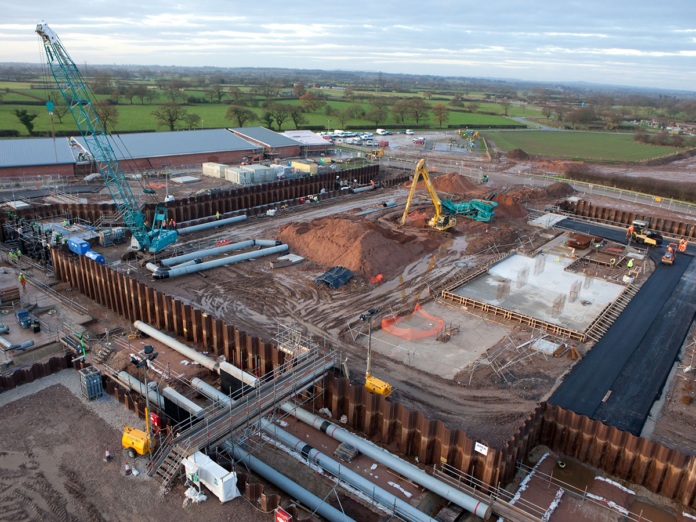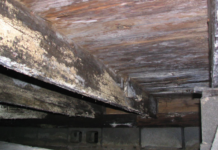Sheet piles are an essential component in modern infrastructure, known for their ability to provide strong and durable retaining walls. These steel structures are driven into the ground to support excavations, waterfront construction, and flood control measures. The interlocking design of sheet piles allows them to create continuous barriers, making them a preferred choice in many geotechnical projects. Their usage ensures stability in construction, protecting against soil erosion and water ingress, especially in environments close to rivers, harbors, and oceans.
Applications of Sheet Piles in Infrastructure Development
Sheet piles are widely used in both temporary and permanent applications. In temporary settings, they are often deployed to support excavations during construction activities, particularly in areas where ground stability is a concern. In permanent applications, sheet piles serve as crucial support for marine structures, flood protection walls, and basements in urban environments. Due to their ability to withstand immense pressure and environmental conditions, sheet piles are a reliable choice for infrastructure projects involving deep excavation or water retention.
Benefits of Using Sheet Piles
The benefits of using sheet piles in construction are vast. Their easy installation, cost-effectiveness, and long lifespan make them a practical solution for various industries. Additionally, their reusability in temporary structures provides an added advantage for contractors looking to optimize project costs. Sheet piles are also known for their minimal environmental impact, as they create less disturbance to the surrounding soil during installation. Their versatility and sustainability make them a key material in modern infrastructure development.
Understanding Crane Rails and Their Role in Industrial Operations
Crane rails are specialized steel tracks designed to support heavy-duty cranes in industrial environments such as shipyards, ports, and manufacturing facilities. These rails ensure smooth crane movement and proper load distribution, making them essential for handling heavy cargo and materials efficiently. Crane rails are specifically engineered to withstand heavy loads and resist deformation, ensuring long-term durability and safety in large-scale operations.
Types of Crane Rails and Their Applications
There are various types of crane rails available, each suited for different industrial applications. Standard crane rails are typically used in lighter operations such as indoor manufacturing facilities, while heavier-duty crane rails are required for outdoor ports and shipyards. These crane rails must be precisely installed to avoid misalignment, which can lead to operational inefficiencies or equipment damage. Choosing the correct type of crane rail for a project is vital to ensure operational effectiveness and safety.
Key Benefits of Crane Rails in Industrial Projects
The implementation of crane rails in industrial operations brings significant advantages. One of the primary benefits is the improved efficiency of material handling systems, which allows for faster project completion and reduced operational downtime. Additionally, the use of crane rails ensures better safety for both workers and equipment, as the rail systems provide stable movement paths for cranes, minimizing the risk of accidents. Moreover, crane rails contribute to long-term cost savings by reducing wear and tear on cranes and enhancing their operational life.
Integrating Sheet Piles and Crane Rails for Infrastructure Success
Both sheet piles and crane rails play critical roles in modern infrastructure projects. While sheet piles provide essential support for excavation and water management, crane rails ensure smooth and efficient industrial operations. By integrating these two components into large-scale infrastructure projects, developers can achieve greater structural stability and operational efficiency. For example, in port construction projects, sheet piles may be used to create retaining walls or reinforce harbor structures, while crane rails ensure efficient loading and unloading of cargo.
Innovations in Structural Steel Products
As infrastructure demands continue to grow, companies like JSP are innovating with new structural steel solutions. In addition to offering high-tensile strength fabricated structures and hot-rolled sections, JSP is leading the charge with products like Speedfloor and Weld-mesh. These products are designed to improve construction speed, cost-effectiveness, and efficiency, helping India build stronger, more sustainable infrastructure. JSP’s commitment to delivering cutting-edge solutions aligns with the nation’s vision for self-reliant infrastructure growth.
Conclusion
Sheet piles and crane rails are indispensable components in the construction and industrial sectors. Their unique properties ensure safety, stability, and efficiency in both geotechnical and industrial applications. Whether supporting deep excavations or facilitating the smooth operation of heavy-duty cranes, these structural elements are vital for the successful completion of infrastructure projects. To learn more about high-quality structural steel products for your next project, visit jsplstructurals.com for expert solutions that drive infrastructure growth.









